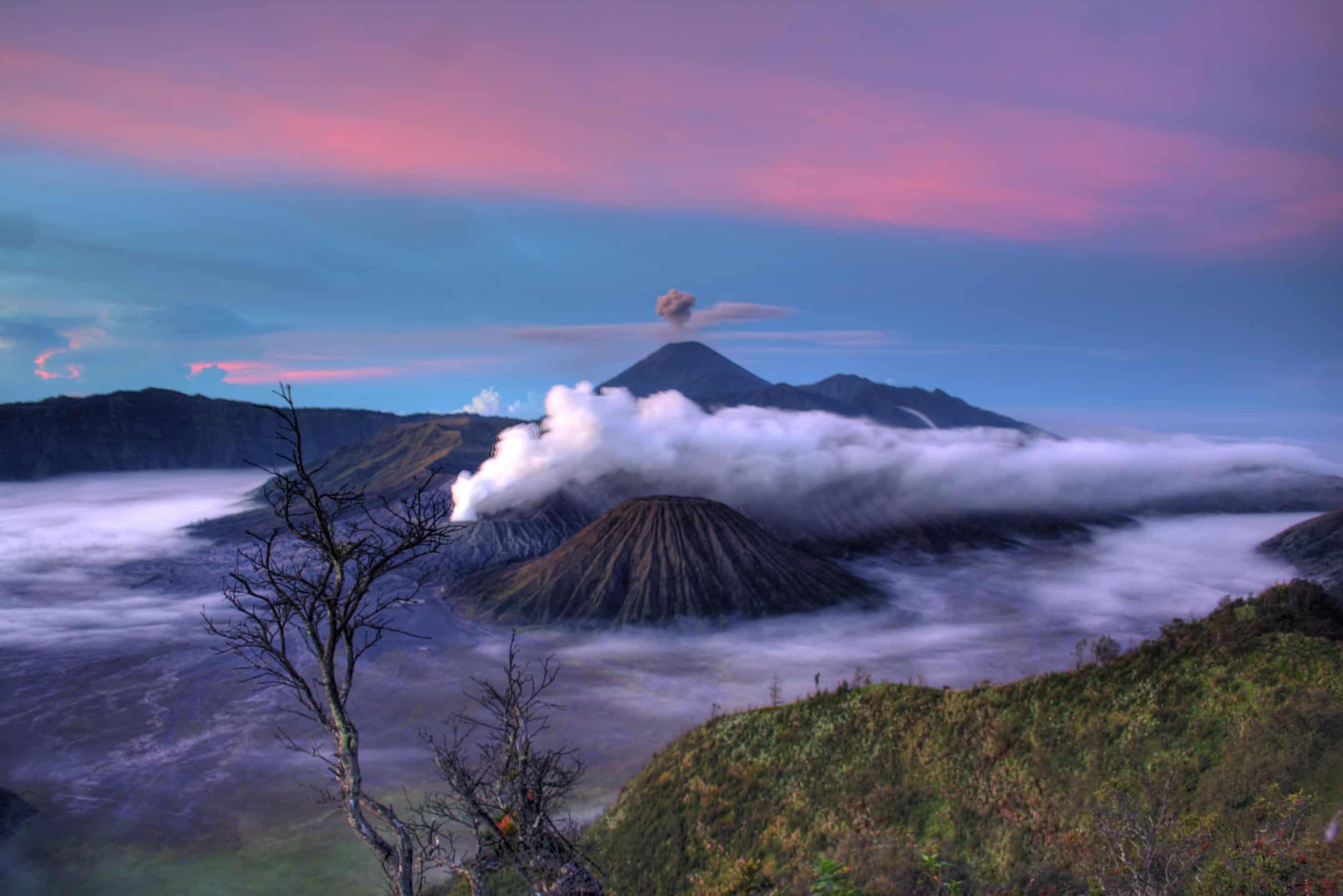Although Indonesia looks small on a map, this country is one of the largest countries in Asia in terms of both land and population. As Indonesia likes to keep its beauty a secret, spread out among its 17,000 islands, visitors might think that Indonesia's natural attractions begin and end in Bali. For visitors on the hunt for Indonesia's beautiful side, they will discover a natural wonderland that will absolutely take their breath away.
Mount Bromo

At 2,329 metres high, Mount Bromo is not the tallest peak in East Java, but it is the most famous. This active volcano is one of the most frequently visited spots in Indonesia due to the unsettling view of the surrounding area. The entire volcano sits surrounded by the Tengger caldera, a massive crater of fine volcanic black sand. If the eerie blackness of the sand wasn't bleak enough, the entire area constantly belches a thick white sulphurous smoke that gives the caldera a stinky air of foreboding. Although Bromo is one of the most active volcanoes in the world, the reputation hasn't stopped a number of travellers from hiking to its rim and peering inside the depths of the earth. One of the most popular attractions at Bromo is to hike to its summit during the wee hours before dawn and catch the stunning sunrise as it dawns over the sulfur smoke covered sands beyond.
Madakaripura Waterfall

Located in the same Bromo-Tengger-Semeru National Park as Mount Bromo, the Madakaripura waterfall showcases the diversity that Indonesia can have within a small area. This waterfall is believed to be the final meditation spot of the famous military Commander-in-Chief Gajah Mada of the great Javanese kingdom of Majaphit. However, while locals revere it, it remains majorly undiscovered by the tourist crowd. The waterfall itself is located at the end of a deep valley in the foothills of the Tengger Mountain Range, requiring a 20 minute trek to reach. The waters from the falls tumble down sheer cliff side over 200 metres before splashing in a tidy line on the ground below. For those familiar with the Indonesian heat, it's easy to see why a number of visitors take the time out of their day to enjoy a dip in the pool below before heading back to civilization.
Kelimutu

Kelimutu is yet another one of Indonesia's many volcanoes. However, Kelimutu isn't known for its amount of activity, but rather, another surprise sits at its summit. Located on the island of Flores, the summit of Kelimutu is also known by the name of the "lake of the three colours". Various eruptions over the years have left three craters on the summit of Kelimutu which have all simultaneously filled up with rain water to form its three separate lakes. However, while the lakes were filled the same way, each comes in a different colour. The red, blue and white lakes are all striking in their contrast, but even more curious is that the colour of the lakes change with the passage of time. This unique colour change is actually due to the algae and different marine plants that live in the lakes. They tint the water different colours and create one of the most unforgettable sights that visitors will ever see.
Ubud

Few visitors to Indonesia can lure themselves away from the siren call of the country's beautiful beaches. However, for those that head into the country's rich inland, a sea of green awaits them. Ubud, perched among the stunning terraced rice fields, is considered the cultural heart of Bali. When visitors aren't touring the art galleries and craft shops, they can take a break to enjoy the daily dance and music performances done by local groups in the street. While Ubud has always been a centre of culture, it has exponentially boomed in the past few years when it comes to tourism. Many come to view the art and the artistry that is the terraced rice fields, but many more come to bike the narrow dirt trails that run throughout the countryside.
Komodo Island
Komodo Island is home to one of the most fascinating creatures on earth - the Komodo dragon. While these dragons are native to Indonesia, the eponymous island is the only place where visitors can still see them in the wild. As the largest lizard in the world, the Komodo dragon can grow as big as three metres long and weighing up to 70 kilograms. With sharp claws and poisonous saliva, these great dragons are considered very dangerous to large prey like humans. As a UNESCO World Heritage Site and a locally protected area, access to Komodo Island is limited, but a number of tours take visitors to spot the dragons at a safe distance in an effort to keep both visitors and the rare dragons safe. It is rumored that the Komodo dragon is where the legends about mythical dragons originated. Once visitors get close enough to spot these massive lizards, it is not hard to see why.
Related content on Canadian Traveller


